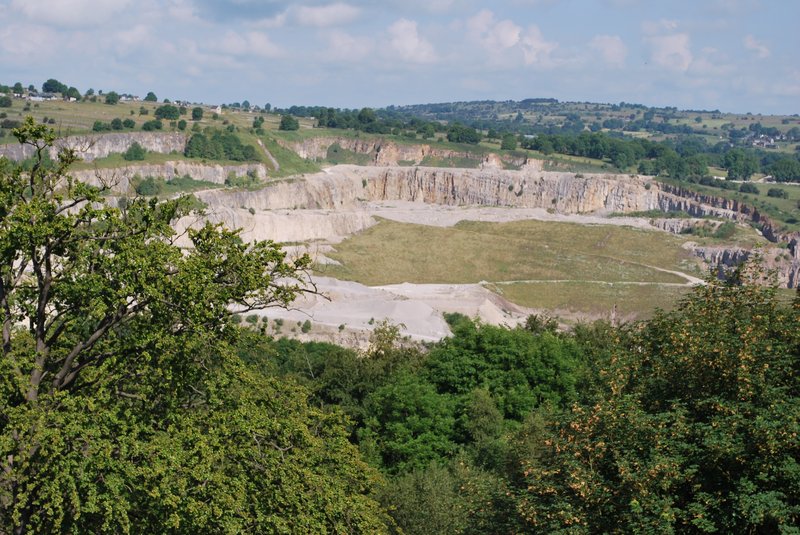Water
Pore (open) space within limestones might be preserved during deposition of carbonate sediment and can be formed during lithification by dissolution of grains and tectonic fracturing. These pore spaces can comprise up to 40% of the rock volume and may range in size from nanometres to kilometres, in the case of caves. In most cases, the pores are a few microns to a few millimetres in diameter, and sufficiently well connected that they can flow water. Recrystallization of limestone to form dolostone (Ca.Mg.CO3) can also create a well-connected network of crystalline pores.
Quarrying and building Stone
Carbonate sedimentary rocks are widely used as building and ornamental stones and so are familiar to many of us where they have been used to construct iconic buildings or provide flooring or tiling for hotels and offices around the world. They are also widely used in less visible ways as a raw material for cement, as well as aggregate and roadstone for many large engineering projects. One of the most common building stones in the UK is Portland Stone, which is extracted on the Isle of Portland, Dorset. It was used to build St Pauls Cathedral and Buckingham Palace in London as well as commercial buildings in Liverpool and Manchester.
Minerals
Limestone and dolostone host sulphides and sulphates in fractures and pores within the rock, often forming important mineral reserves. A particular type of mineralization, Mississippi-Valley type, occurs almost exclusively within limestone and dolostone. These deposits are mined in the USA and Canada, but historically have also been important in the UK and Ireland. Here a number of different sub-types have been mined for lead (from galena, PbS) until the 19th Century. In the 20th Century, mining of associated minerals that had historically been of low economic value became more important. For example, in Derbyshire, UK, the fluorite (CaF2) was mined to source fluorine for refrigeration systems and barite (BaSO4) was produced for the manufacture of drilling muds for the oil and gas industry in the North Sea.
Energy
Many of the largest hydrocarbon reserves in the World are in carbonate reservoirs. Deep in the subsurface, at depths of around 1 - 4 km, water in pores between grains can be replaced by oil and/or gas. If this is trapped by a geological structure then it can form a hydrocarbon reservoir. Over 50% of the World’s hydrocarbon reserves are hosted in carbonate reservoirs, including some of the largest oil and gas fields in the world, in Saudi Arabia, UAE, Oman, Qatar, Iran and Kazakhstan. As we now look towards future, clean energy supplies, carbonate rocks are being evaluated for their potential to provide geothermal energy.
